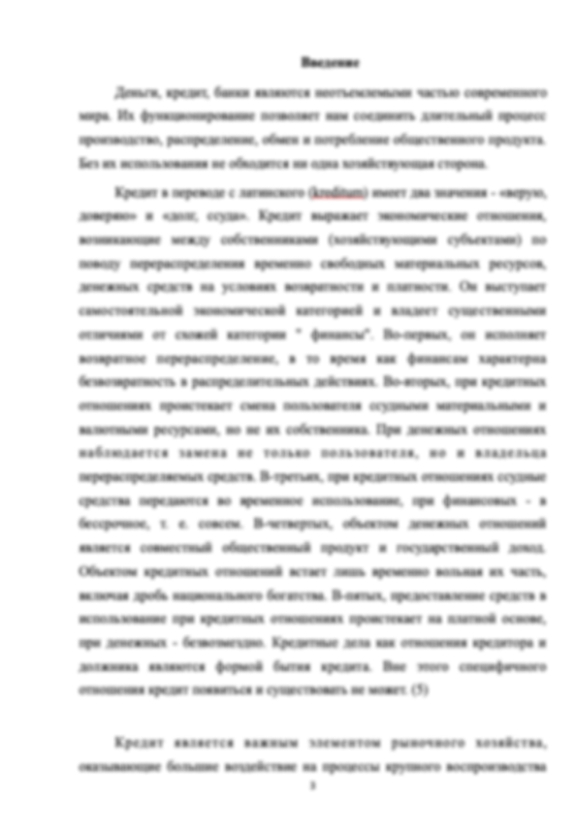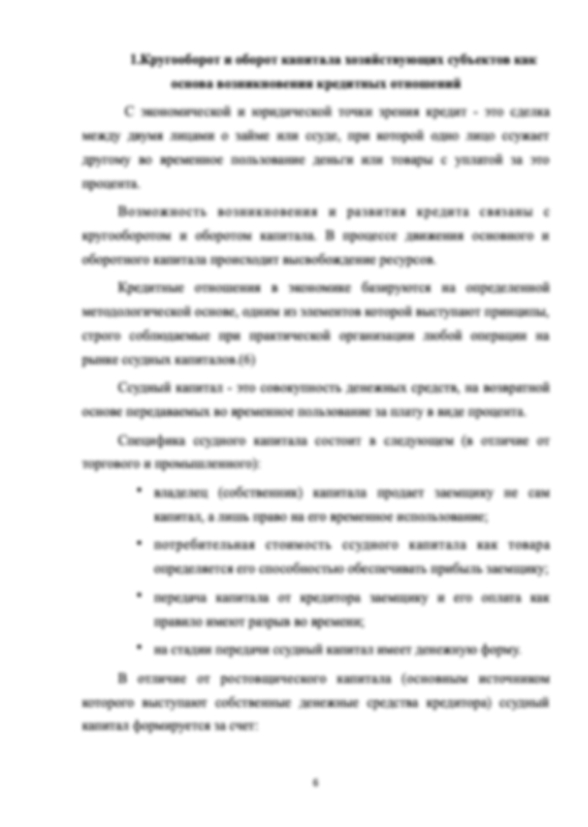Надеюсь продолжить работу с этим обязательным, пунктуальным, глубоко понимающим тему и специфику человеком.
Информация о работе
Подробнее о работе

"ОКАПЫВАНИЕ" МЕНЕДЖЕРОВ И УПРАВЛЕНИЕ ЛИКВИДНОСТЬЮ КОМПАНИИ
- 48 страниц
- 2020 год
- 1 просмотр
- 0 покупок
Гарантия сервиса Автор24
Уникальность не ниже 50%
Фрагменты работ
1 Introduction
Increasing cash reserves of American corporations attracted a lot of attention both by public and academic community. Bates et al. (2009) documented a significant cash-to-assets ratio increase from 10.5% in 1980 to 23.2% in 2006. For example, Apple Inc. had $146 billion in cash and cash equivalents in the summer of 2013 year while the companies included in the S&P 500 index held a total of $1.2 trillion in cash what is more than the GDP of both Mexico and South Korea. Cash holdings are accounted over one-fifth of total assets owned by a firm (Fresard, 2010). Such huge numbers stress an importance of proper liquidity management especially for those companies that face difficulties with obtaining outside financing. One of the problems associated with a corporate liquidity management is a conflict of interests between managers and shareholders. The problem itself is inherent in a separation of ownership and control (Smith, 1852). Jensen and Meckling (1976) defined this problem between managers and principal shareholders as an agency problem. Further papers (Shleifer and Vishny 1989, Charreaux 1997, Pige 1999) introduced a notion of entrenchment and described entrenchment strategy main stages: valorization, control reduction and increase in consumption. Of course, managerial consumption of private benefits negatively affects firm performance (Morck et al. 1988, Hiller and McColgan 2001, Lins and Kalcheva 2004). Conflict of interests between shareholders and managers become more severe when the company faces large free cash flows (Jensen 1986, Stulz 1990). Due to the fact that company growth positively affects managers’ compensation and power, managers have incentives to boost the growth beyond optimal levels and engage in ‘empire-building’ (Murphy 1985). Such a behavior results in investing below the cost of capital or investments with negative net present value and value-destructing acquisitions (Harford, 1999). Taking into account entrenched managers desire to dissipate cash and their preference of cash over fixed assets (Myers and Rajan 1998) another aspect that plays a crucial role in this problem is a level of corporate governance. Many papers state that weaker corporate governance leads to excess spending (Dittmar and Mahrt-Smith 2007, Harford et al. 2008, Sheu and Lee 2012) and higher levels of cash holdings (Pinkowitz et al. 2004, Basil and Clark, 2016). Research papers investigating effects of agency conflict on corporate liquidity management focused mainly on cash component exclusively. Sufi (2009) mentioned that 87% of companies use credit lines what shifted the research focus to the total liquidity of the company. Findings on the total liquidity are quite controversial. On the one hand, usage of bank credit lines limits the power of managers via monitoring, covenants and increased bank oversight what predicts that entrenched managers prefer cash over lines of credit (Yun, 2009, Elyasiani and Zhang 2015). On the other hand, they tend to hold more lines of credits than assets because of extra liquidity provided by the credit lines (Elyasiani and Zhang, 2015). By the same logic, entrenched managers tend to have a higher
5
leverage (Bunkanwanicha et al. 2008) but relationship between the leverage and cash holdings is often non-linear (Thanatawee 2019, Ji et al. 2019).
This research paper provides an extended analysis of agency cash holding motive. Panel data on Russian public companies from 2015 year to 2019 year is taken as a research sample. Final data accounted for 574 observations for 127 companies from eight sectors (excluding financial institutions and utilities). Instead of looking at the managerial entrenchment alone I performed a deep analysis accounting for different aspects of agency problem simultaneously: CEO entrenchment, corporate governance, CEO tenure, CEO ownership and leverage of the company. The CEO entrenchment is measured using provision-approach index proposed by Bebchuk et al. (2009). Corporate governance would be proxied using a modified version of governance index (Gompers et al. 2003) composed out of eight components: board size, number of board meeting, proportion of independent directors, audit committee existence and activity, renumeration and HR committee existence and activity and disclosure of management renumeration. The CEO tenure was included in the model explicitly rather than indirectly (Elyasiani and Zhang 2015) as it takes time to build relations with board of directors. The CEO ownership was also considered in the model explicitly as higher managerial ownership (taking into account presence of non-linearity) is often supposed to decrease conflict of interests and insure value maximization (Pige 1999, Hillier and McColgan 2001). Integration of the leverage in the model allows to receive more insights both the perspective of corporate liquidity management and capital structure as agency costs are inherent in each of them. Additionally, I would re-examine the model using alternating leverage definition - market based leverage. During the research process different specifications were used including interactions technique. Each of the main variables was multiplied by a set of sector dummy variables and checked for significance. Ownership was the only one variable showing obvious significance. Such a procedure allowed to use ownership interactions for further analysis and robustness checks. Control variables are used to introduce in the model other cash holding motives (transaction and precautionary). Tax motive (Foley et al. 2007, Falkeunder and Petersen 2012) was not taken into account as this motive is not expected to be significant for Russian public companies and Bloomberg data does not specify foreign income for them.
Several results were obtained. Regression analysis showed statistical insignificance of CEO entrenchment in determination of cash-to-assets ratio what may be due to small research window or insufficient detalization of corporate governance structure reports. Corporate governance index and CEO tenure negatively influence the cash-to-assets ratio. A sign of the corporate governance coefficient is consistent with a classical curing effect of control mechanisms over the agency conflict. Positive tenure coefficient can be explained by CEOs desire to maintain reputation (Lim and Lee, 2019). The data showed no statistical significance of CEO ownership on the corporate cash
6
holdings. Interactions approach contributes to the existing literature deeper investigating significance and insignificance drivers of the ownership. This technique revealed that energy and communications sectors interactions are statistically significant in determination of the cash ratio what is consistent with the interest-alignment hypothesis. Finally, empirical analysis showed a negative relation between corporate leverage choice and the cash-to-assets ratio. Such a result supports papers that characterize leverage as an alternative liquidity instrument and rejects existence of debt entrenchment motive that predicts that companies with an entrenched CEO tend to use excess liquidity. Empirical results are robust to alternative regression specifications and account for fixed effects. Two main research limitations should be mentioned. Firstly, it is a narrow research window what is explained by the fact that Russian public companies started to publish more detailed reports following the crisis of 2014 year. Secondly, it is vague detalization of corporate governance reports. Some companies mention that particular governance principles are not stated officially in charter but are followed at practice what makes construction of indexes less accurate. This research contributes to an understanding of agency cash holding motive. Moreover, it suggests mechanism able to reduce a problem of managerial entrenchment and improve corporate liquidity management.
The rest of the paper is structured in the following way. First part reviews the existing literature: a definition of managerial entrenchment and entrenchment strategy, corporate liquidity management and its mechanisms and a relational analysis between managerial entrenchment and its effects on a firm value and corporate liquidity. Second part of the paper deals with hypotheses development, model specification, explanation of methodology and sample data discussion. The last part describes all the findings and presents the robustness checks.
Contents
1 Introduction ............................................................................................................ 5
2 Literature review .................................................................................................... 8
2.1 Managerial entrenchment ......................................................................... 8
2.2 Corporate liquidity management ............................................................ 10
2.3 Capital structure and managerial entrenchment ..................................... 15
3 Empirical framework ........................................................................................... 17
3.1 Hypothesis development ......................................................................... 17
3.2 Model specification ................................................................................ 18
3.3 Data and summary statistics ................................................................... 25
4 Results .................................................................................................................. 29
4.1 Results discussion ................................................................................... 29
4.2 Robustness checks .................................................................................. 33
5 Conclusion ........................................................................................................... 37
6 References ............................................................................................................ 39
7 Appendices ........................................................................................................... 45
Добрый день! Уважаемые студенты, Вашему вниманию представляется дипломная работа на тему: «"ОКАПЫВАНИЕ" МЕНЕДЖЕРОВ И УПРАВЛЕНИЕ ЛИКВИДНОСТЬЮ КОМПАНИИ»
References
Acharya, V., Almeida, H., Campello, M., 2007. Is cash negative debt? A hedging perspective on corporate financial policies. Journal of Financial Intermediation, 16 (4): 515–554.
Al-ahdal, W.M., Alsamhi, M.H., Tabash, M.I., Farhan, N.H.S., 2020. The impact of corporate governance on financial performance of Indian and GCC listed firms: An empirical investigation. Research in International Business and Finance, 51: 101083.
Al-Najjar, B., Clark, E., 2016. Corporate governance and cash holdings in MENA: Evidence from internal and external governance practices. Research in International Business and Finance, 39 (A): 1–12.
Alfonsina, I., Leone, L., Ventouri, A., 2017. Does executive ownership lead to excess target cash? The case of UK firms Corporate Governance. The International Journal of Business on Society, 17 (5): 876–895.
Almeida, H., Campello, M., Weisbach, M. S., 2004. The cash flow sensitivity of cash. The Journal of Finance, 59 (4): 1777–1804.
Bates, T. W., Kahle, K. M., Stulz, R.M., 2009. Why do US firms hold so much more cash than they used to? The Journal of Finance, 64 (5): 1985–2021.
Bebchuk, L., Cohen, A., Ferrell, A., 2009. What matters in corporate governance? Review of Financial Studies, 22 (2): 783–827.
Berger, P., Ofek, E., Yermack, D., 1997. Managerial Entrenchment and Capital Structure Decisions. Journal of Finance, 52 (4): 1411–1438.
Bhuiyan, M. B. U., Hooks, J., 2019. Cash holding and over-investment behavior in firms with problem directors. International Review of Economics and Finance, 61: 35–51.
Boot, A., Thakor, A., Udell, G., 1987. Competition, risk neutrality and loan commitments. Journal of Banking and Finance, 11 (3): 449–471.
Brick, I. E., Chidambaran, N.K., 2010. Board meetings, committee structure, and firm value. Journal of Corporate Finance, 16: 533–553.
39
Bunkanwanicha, P., Gupta, J., Rokhim, R., 2008. Debt and entrenchment: Evidence from Thailand
and Indonesia. European Journal of Operational Research, 185 (3): 1578–1595.
Campello, M., Lin, C., Ma, Y., Zou, H., 2011. The Real and Financial Implications of Corporate Hedging. Journal of Finance, 66 (5): 1615–1647.
Carpenter, R., Petersen, B., 2012. Is the Growth of Small Firms Constrained by Internal Finance? Review of Economics and Statistics, 84 (2): 298–309.
Charreaux, G., 1997. Le gouvernement des entreprises. Paris, Économica, 421-469.
Chen, Y., R., Chuang, W., T., 2009. Alignment or entrenchment? Corporate governance and cash holdings in growing firms. Journal of Business Research, 62 (11): 1200–1206.
Cunha, I., 2014. Internal vs. external cash: evidence on M&A and share repurchases. Nova School of Business and Economics, Working Paper.
Dittmar, A., Duchin, R., 2016. Looking in the rearview mirror: the effect of managers’ professional
experience on corporate financial policy. Review of Financial Studies, 29: 565–602.
Dittmar, A., Mahrt-Smith, J., 2007. Corporate governance and the value of cash holdings. Journal of Financial Economics, 83 (3): 599–634.
Dittmar, A., Mahrt-Smith, J., Servaes, H., 2003. International corporate governance and corporate cash holdings. The Journal of Financial and Quantitative Analysis, 38(1): 111.
Elyasiani, E., Zhang, L., 2015. CEO entrenchment and corporate liquidity management. Journal of Banking and Finance, 54: 115–128.
Elyasiani, E., Zhang, L., 2018. CEO entrenchment and loan syndication. The Quarterly Review of Economics and Finance, 67: 334–346.
Faulkender, M., Petersen, M., 2012. Investment and capital constraints: Repatriations under the American jobs creation act. Review of Financial Studies, 25(11), 3351–3388.
Foley, F. C., Hartzell, J. C., Titman, S., Twite, G., 2007. Why do firms hold so much cash? A tax– based explanation. Journal of Financial Economic, 86, 579–607.
40
Fresard, L. 2010. Financial strength and product market behavior: The real effects of corporate
cash holdings. Journal of Finance, 65 (3): 1097–1122.
Gan, H., Park, M., 2017. CEO managerial ability and the marginal value of cash. Advances in Accounting 38 (2017) 126–135.
Ghosh C., Giambona, E., Harding, J., Sirmans, F., C., 2011. How entrenchment, incentives and governance influence REIT capital structure? Journal of Real Estate Finance and Economics, 43: 39–72.
Gompers, P., Ishii, J., Metrick, A., 2003. Corporate governance and equity prices, Quarterly Journal of Economics, 118 (1): 107–155.
Greenbury, R., 1995. Directors’ remuneration: Report of a study group chaired by Sir Richard
Greenbury. London: Gee.
Harford, J., 1999. Corporate cash reserves and acquisitions. Journal of Finance, 54 (6): 1969–1997.
Harford, J., Mansi, S., Maxwell, W., 2008. Corporate governance and firm cash holdings in the US.
Journal of Financial Economics, 87 (3): 535–555.
Hillier, D., McColgan, P., 2001. Insider ownership & corporate been worth: Year empirical test from the United Kingdom corporate sector. Financial Management Association (FMA) Meeting, Paris.
Jensen M. C., Meckling, W., 1976. Theory of the firm: Managerial behavior, agency costs, and
capital structure. Journal of Financial Economics, 3 (4): 305–360.
Jensen, M. C., 1986. Agency Costs of Free Cash Flow, Corporate Finance, and Takeovers.
American Economic Review, 76 (2): 323–329.
Ji, S., Mauer, C. D., Zhang, Y., 2019. Managerial entrenchment and capital structure: The effect of diversification. Journal of Corporate Finance. Available online, Article 101505.
Jiang, Z., Lie, E., 2015. Cash holding adjustments and managerial entrenchment. Journal of Corporate Finance, 36: 190–205.
Jo, H., Pan, C., 2009. Why are firms with entrenched managers more likely to pay dividends? Review of Accounting and Finance, 8 (1): 87–116.
41
Keynes, J. M., 1936. The General Theory of Employment, Interest and Money. Harcourt Brace, London.
Kuan, T. H., Li, C. S., Liu, C. C., 2012. Corporate governance and cash holdings: A quantile
regression approach. International Review of Economics and Finance, 24: 303–314.
Kumar, P., Rabinovitch, R., 2013. CEO entrenchment and corporate hedging: Evidence from oil
and gas industry. Journal of Financial and Quantitative Analysis, 48 (3): 887–917.
Lei, Q., Lin, B., Wei, M., 2013. Types of agency cost, corporate governance and liquidity. Journal of Accounting and Public Policy, 32 (3): 147–172.
Li, W. X., Chen, C., French, J., 2012. The relationship between liquidity, corporate governance, and firm valuation: Evidence from Russia. Emerging Markets Review, 13 (4): 465–477.
Lim, J., Lee, S. C., 2019. Relationship Between the Characteristics of CEOs and Excess Cash Holdings of Firms. Emerging Markets Finance and Trade, 55 (5): 1069–1090.
Lins, K., Kalcheva, I., 2004. International evidence on cash holdings and expected managerial agency problems. The Review of Financial Studies, 20 (4): 1087–1112
Lins, K., Servaes, H., Tufano, P., 2010. What drives corporate liquidity? An international survey of cash holdings and lines of credit. Journal of Financial Economics, 98 (1): 160–176.
Lipton, M., Lorsch, J., 1992. A modest proposal for improved corporate governance. Business Lawyer, 48 (1): 59–77.
Main, B. G. M., Johnston, J., 1993. Remuneration committees and corporate governance.
Accounting and Business Research, 23 (91A): 351–362.
Morck, R., Shleifer, A., Vishny, R., 1988. Management ownership and market valuation. Journal of Financial Economics, 20: 293–315.
Morellec, E., 2004. Can managerial discretion explain observed leverage ratios? The Review of Financial Studies, 17 (1): 257–294.
Mulligan, C., 1997. Economies, the Value of Time, and the Demand for Money: Longitudinal
Evidence from Firms. Journal of Political Economy, 105 (5): 1061–1079.
42
Murphy, K. J., 1985. Corporate Performance and Managerial Remuneration: An Empirical
Analysis. Journal of Accounting and Economics, 7(1-3): 11–42.
Myers, S., Rajan, R., 1998. The paradox of liquidity. Quarterly Journal of Economics, 113 (3): 733– 771.
Nikolov, B., Schmid, L., Steri, R., 2018. Dynamic corporate liquidity. Journal of Financial Economics, 132 (1): 76–102.
Opler, T., Pinkowitz L., Stulz, R. M., Williamson, R., 1999. The determinants and implications of corporate cash holdings. Journal of Financial Economics 52 (1): 3–46.
Orens, R., Reheul, A. M., 2013. Do CEO demographics explain cash holdings in SMEs? European Management Journal, 31 (6): 549–563.
Ozkan, A., Ozkan, N., 2004. Corporate cash holdings: An empirical investigation of U.K.
companies. Journal of Banking and Finance, 28 (9): 2103–2134.
Paquerot, M., 1997. Stratégie d‟enracinement des dirigeants, performance de la firme et structure de contrôle. Le gouvernement des entreprises, Economica.
Pige, B., 1999. Enracinement des dirigeants et richesse des actionnaires. Finance Contrôle Stratégie.
Pinkowitz, L., Stulz, R., Williamson, R., 2004. Do firms with poor protection of investor rights hold more cash? Georgetown University.
Sheu, H. J., Lee, S. Y., 2012. Excess cash holdings and investment: the moderating roles of financial
constraints and managerial entrenchment. Accounting and Finance, 52 (S1): 287–310.
Shleifer, A., Vishny, R., 1989. Management entrenchment: the case of manager-specific
investments. Journal of Financial Economics, 25 (1): 123–139.
Short, H., Keasy, K., 1999. Managerial ownership and the performance of firms: Evidence from the
UK. Journal of Corporate Finance, 5 (1): 79–101.
Smith, A., 1852. An Inquiry into the Nature and Causes of Wealth of Nations. London: T. Nelson and Sons.
43
Stulz, R., 1990. Managerial discretion and optimal financing policies. Journal of Financial Economics, 26 (1): 3–27.
Sufi, A., 2009. Bank lines of credit in corporate finance. An empirical analysis. Review of Financial Studies, 22 (3): 1057–1088.
Thanatawee, Y., 2019. Alignment or Entrenchment? Evidence from Cash Holdings in Thailand.
Afro-Asian Journal of Finance and Accounting, 39 (4): 34–49.
Vafeas, N., 1999. Board meeting frequency and firm performance. Journal of Financial Economics 53: 113-142.
Yermack, D., 1996. Higher market valuation for firms with a small board of directors. Journal of Financial Economics, 40 (2): 185–212.
Yun, H., 2009. The choice of corporate liquidity and corporate governance. Review of Financial Studies, 22 (4): 1449–1475.
Форма заказа новой работы
Не подошла эта работа?
Закажи новую работу, сделанную по твоим требованиям


